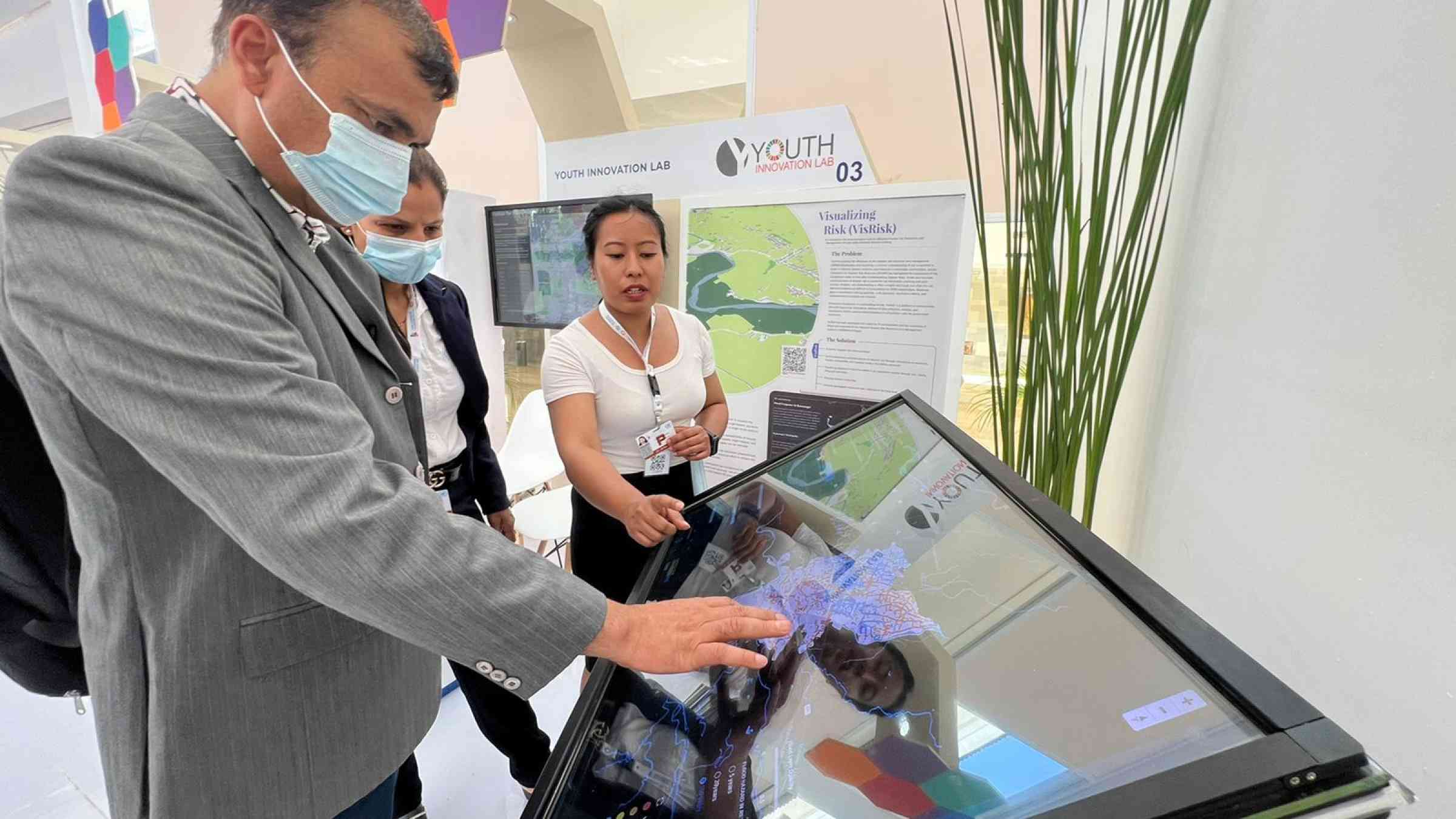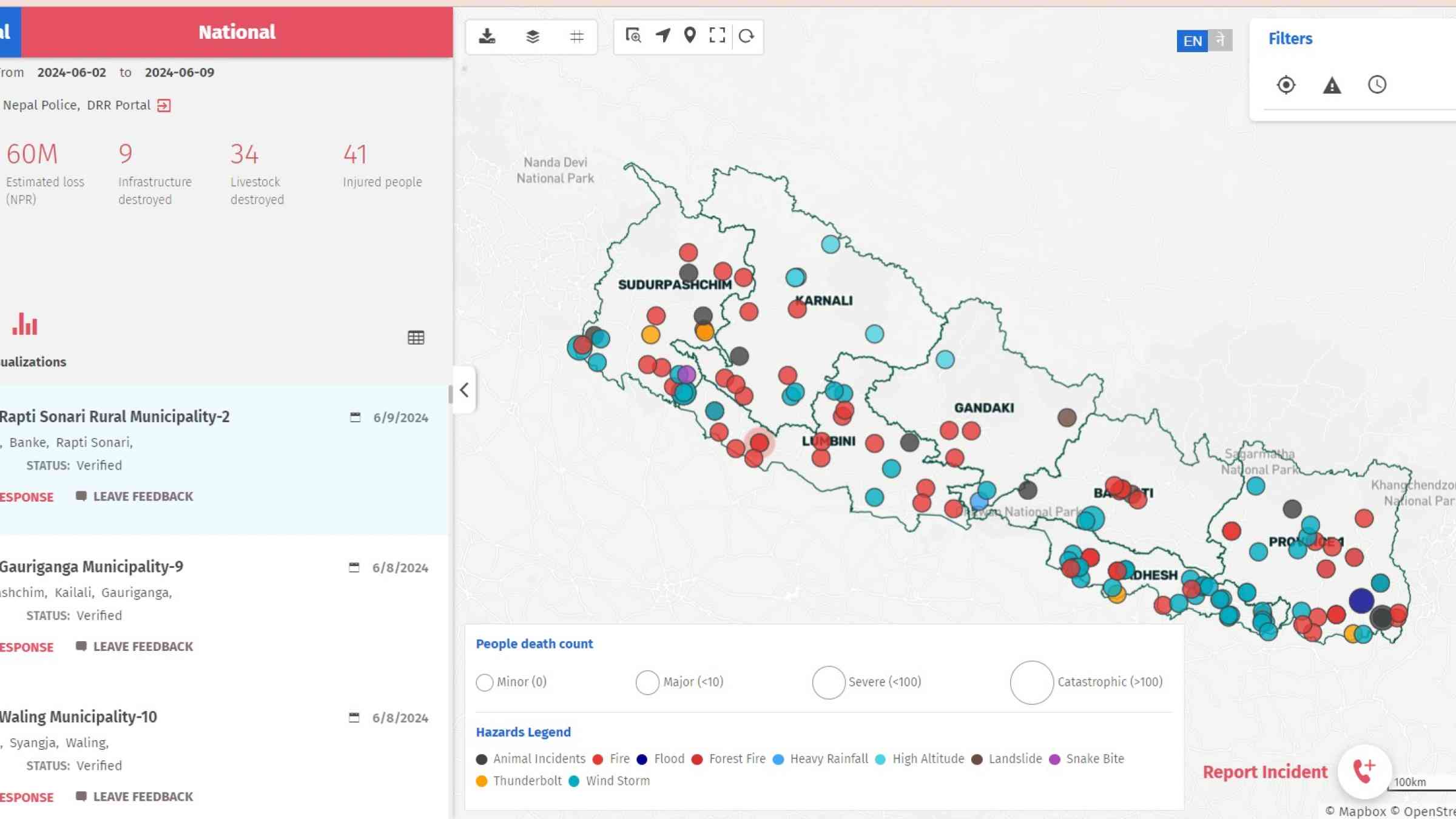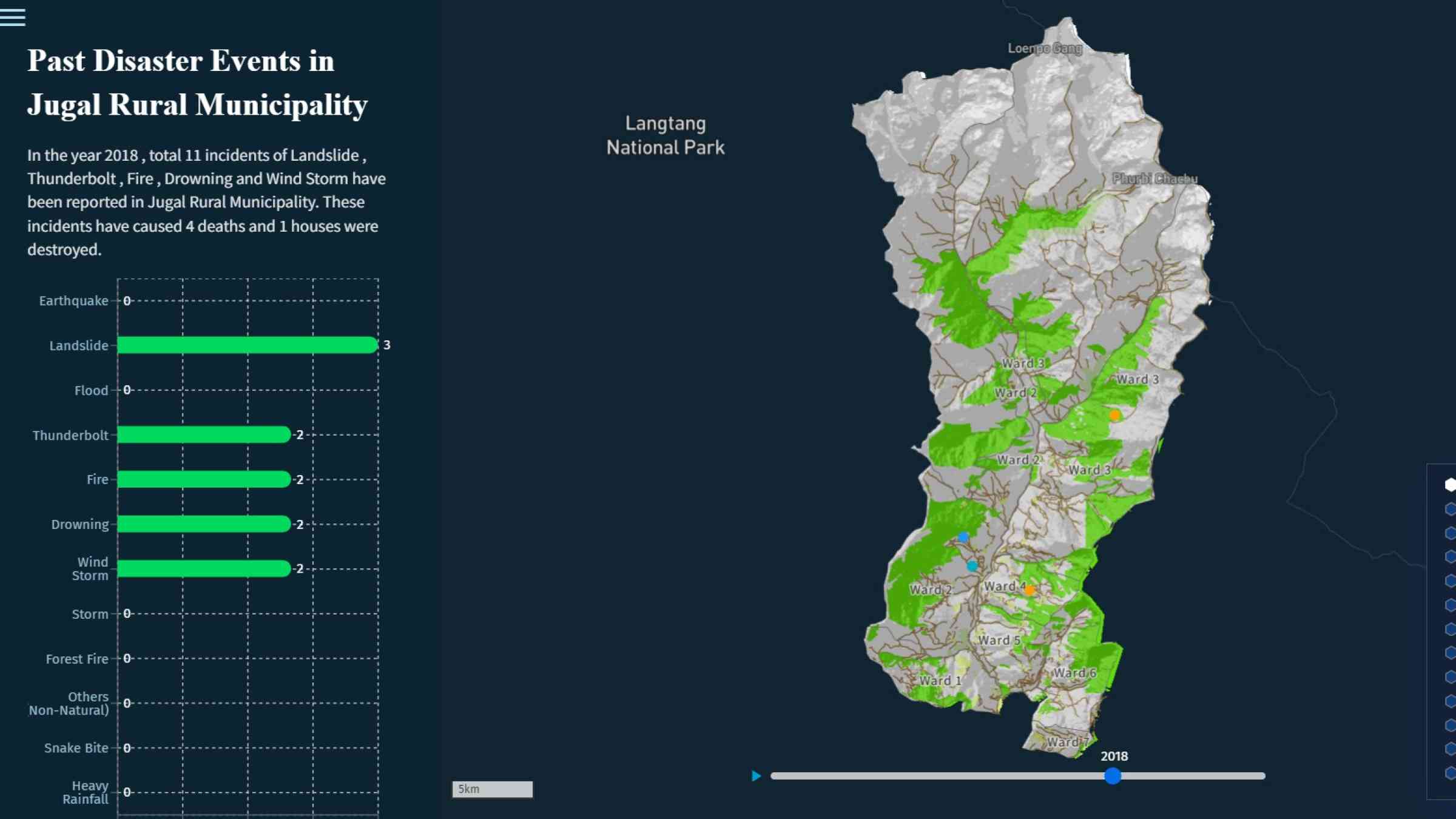Keeping people at the centre of risk data initiatives

Bridging the gap in community understanding
The BIPAD Portal was developed to meet the need to convey information to the community about the technical aspects of engineering that are vital to ensure disaster resiliency. Having worked as a structural on earthquake recovery after Nepal's 2015 Gorkha Earthquake, I realized that it was essential that we bridge the gap between technical information about disaster risk and community knowledge about how to take action.
The community and local government must be able to understand the importance of risk-informed decision-making, not just during disasters, but also before and after. This requires fostering empathy and understanding, and working hand-in-hand with communities. So, when I saw an opportunity to work for the Youth Innovation Lab researching and implementing the BIPAD Portal, a disaster-information management system to support risk communication and informed decision making, I realized this could be a tool to meet those needs.
BIPAD Portal for the transition from risk to resilience

Screenshot of a BIPAP portal feature
The Bipad Portal is an online platform for data-driven decision-making in various aspects of disaster management that supports Nepal's journey from risk to resilience. It includes the following six features:
Data sharing and partnership
The Bipad Portal collects and compiles data from various sources, including government agencies, NGOs, and community-based organizations. The national, provincial, district and local levels governments along with Nepal Police can add, edit, delete, update, verify and comment on datasets in the various modules of the portal based on the permissions provided. The data added to the portal is openly available to everyone using the portal. Moreover, the Bipad Portal also sources landcover and exposure datasets from OpenStreetMap, which is a free editable map of the world. OpenStreetMap is built by a community of mappers.
Risk assessment
The portal facilitates risk assessment by providing access to up-to-date data on hazards, exposure, and vulnerabilities. It enables stakeholders to assess the potential impact of different hazards on specific regions or communities. It aggregates information related to disaster risk, vulnerability, and the impacts of past disasters. This data is analyzed to identify trends, patterns, and areas of high risk. This information is essential for understanding the risks and formulating effective disaster risk reduction strategies.
Planning and preparedness
Based on the data and analysis available on the Bipad Portal, disaster management authorities can develop comprehensive disaster management plans. These plans outline strategies for preparedness, response, and recovery. The portal helps in identifying priority areas for interventions, allocating resources, and coordinating efforts among different stakeholders.
Early warning systems
The Bipad Portal supports the implementation of early warning systems by integrating real-time data from various sources. It provides a platform for monitoring and disseminating warnings about potential hazards, such as floods, landslides, or earthquakes. Early warnings help communities and authorities to take timely actions to minimize the impact of disasters.
Decision Support
The BIPAD Portal offers decision support tools and visualizations to aid in data-driven decision-making. It presents information in a user-friendly manner, allowing policymakers and stakeholders to analyze data, generate reports, and visualize spatial information through maps and graphs. This supports evidence-based decision-making processes and enables effective resource allocation.
Monitoring and Evaluation
The portal facilitates the monitoring and evaluation of disaster risk reduction and management initiatives. It allows stakeholders to track the progress of implemented strategies, assess their effectiveness, and make necessary adjustments based on the feedback received from the system.

Screenshot of a VisRisk feature
Risk communication: An approach of VisRisk development
The innovation process began with research team's quest for searching examples of resilience building through data visualization that could be woven into the fabric of Nepal's disaster preparedness.
Working with our UX designers and developers, we engaged in brainstorming sessions and consultations with government officials. Eventually we came up with the prototype for a product that uses the power of data, harnessed from various modules of the portal, to illustrate disaster scenarios in each area. This module, VisRisk, was added to the BIPAD Portal, bridging the gap between raw information and actionable insights, offering authorities at every level the tools to inform their decisions.
The Chief Executive of NDRRMA launched VisRisk at the Global Platform for Disaster Risk Reduction (GPDRR) in 2022 in Indonesia with live demonstrations for the 5,000 participants. This presentation before a global audience was also an opportunity to solicit feedback and suggestions for future improvements from international disaster risk reduction and management (DRRM) practitioners.
Data for transitioning from risk to resilience
The concept of "risk to resilience" means becoming stronger in the face of risks. It means not merely reacting when a problem arises, but proactively preparing to handle challenges and recover from them.
This process involves careful assessment of the risks we face, whether in our community, organization, or any system we're part of. In addition to identifying dangers, we need to find ways to withstand, recover, and adapt.
Disaster risk reduction and management requires a shift from merely managing and lessening risks to a comprehensive strategy to build resilience. Risks are complex and interlinked, which means we need to make ourselves, our communities, and our systems stronger and more adaptable, so that they can cope, recover, and adapt effectively.
Informed data-driven decision-making makes this possible, and the Bipad Portal is making this a reality in Nepal.
Angela Tamrakar is an experienced disaster risk reduction and management professional with a Master’s degree in Civil Engineering from Tongji University in Shanghai, China. She has participated in various initiatives building resilient communities in Nepal. In 2022 the WIN DRR Awards recognized her leadership and skills in driving positive change, naming her as a finalist for the Rising Star Leadership Award. Angela currently works on promoting data driven decision making to enhance disaster resilience efforts.